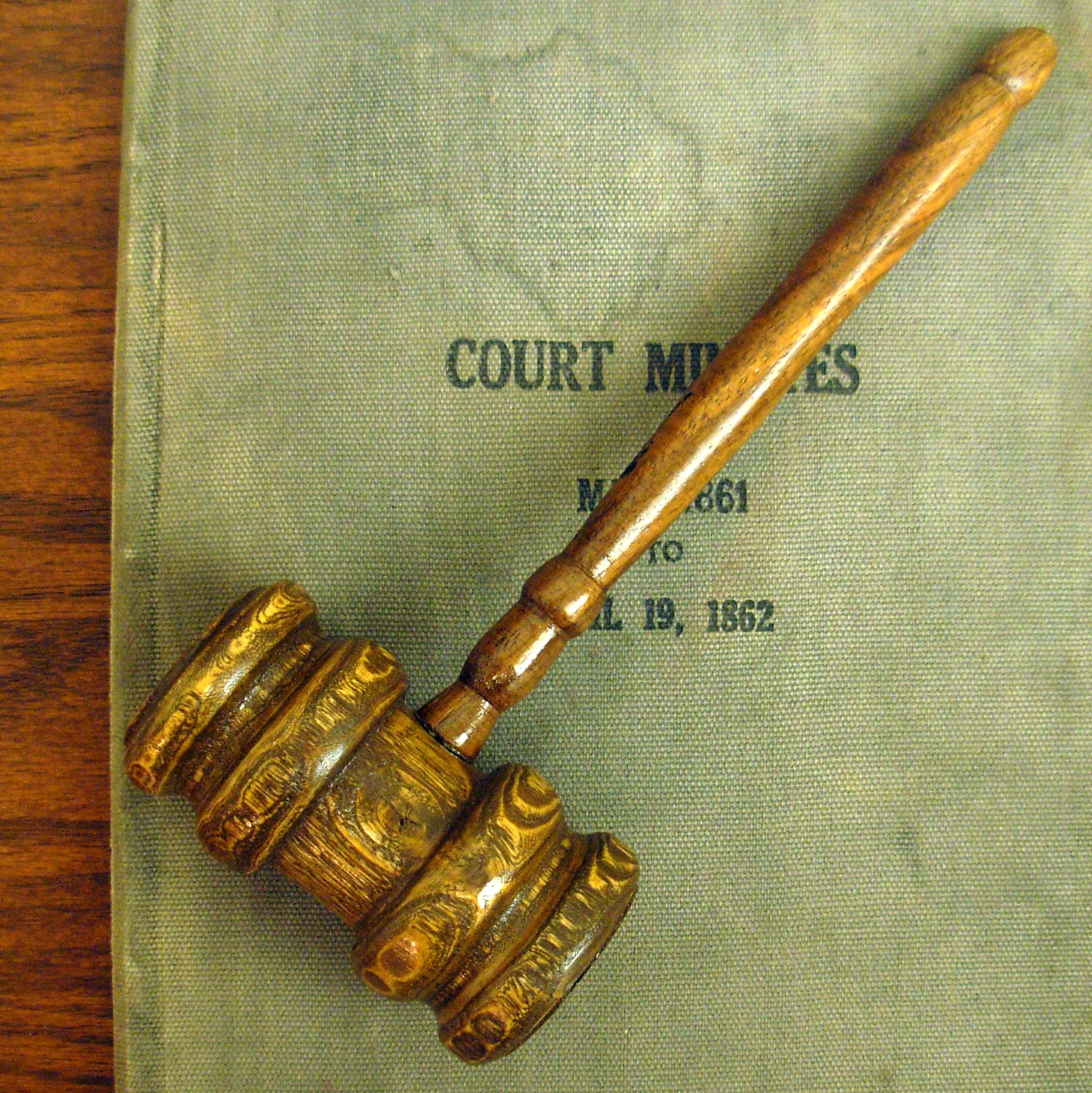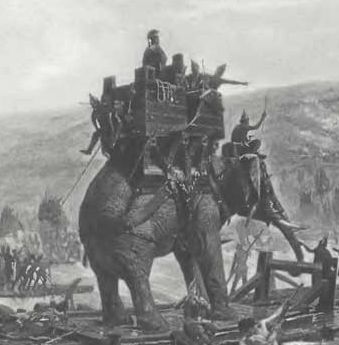This is the case challenging the prohibition on 18-20 year olds being able to purchase a gun from a federally licensed dealer. You can find the opinion here. I haven’t read it in detail, because it’s rather lengthy, and I don’t have time. But skimming through the opinion, I think the Circuit Court seems to have done a combination of analysis through history and tradition, like we saw with Judge Kavanaugh’s dissent in the DC Circuit in Heller II, and intermediate scrutiny analysis. I wouldn’t go so far as to suggest the “Intermediate Scrutiny Two-Step” is at work here. This is what I have dubbed the practice of relabeling rational basis review, or something only slightly more rigorous, as intermediate scrutiny, in an attempt to uphold a favored law with a minimal burden put on the government, in terms of justifying the restriction. But I do want to take a look at some parts of the opinion that jumped out at me:
In the view of at least some members of the founding generation, disarming select groups for the sake of public safety was compatible with the right to arms specifically and with the idea of liberty generally.
This may be true, but what does it really tell us? Large numbers of the founding generation also thought chattel slavery was compatible with “the idea of liberty generally,” but changes in the Constitution since then have rendered many of these ideas moot. Granted, it shows us that the founding generation understood some controls over arms were acceptable, but it tells us little about what kinds of restrictions are acceptable. Are minors among “select groups” which can be disarmed “for the sake of public safety?”
Notably, the term “minor†or “infantâ€â€”as those terms were historically understood—applied to persons under the age of 21, not only to persons under the age of 18. The age of majority at common law was 21, and it was not until the 1970s that States enacted legislation to lower the age of majority to 18. See, e.g., Black’s Law Dictionary 847 (9th ed. 2009) (“An infant in the eyes of the law is a person under the age of twenty-one years, and at that period . . . he or she is said to attain majority . . . .†(quoting John Indermaur, Principles of the Common Law 195 (Edmund H. Bennett ed., 1st Am. ed. 1878))); id. (“The common-law rule provided that a person was an infant until he reached the age of twenty-one. The rule continues at the present time, though by statute in some jurisdictions the age may be lower.†(quoting John Edward Murray Jr., Murray on Contracts § 12, at 18 (2d ed. 1974))); see generally Larry D. Barnett, The Roots of Law, 15 Am. U. J. Gender Soc. Pol’y & L. 613, 681–86 (2007). If a representative citizen of the founding era conceived of a “minor†as an individual who was unworthy of the Second Amendment guarantee, and conceived of 18-to- 20-year-olds as “minors,†then it stands to reason that the citizen would have supported restricting an 18-to-20-year-old’s right to keep and bear arms.
That’s what the analysis should hinge on: is the age of majority 18 or 21? If the answer is 21, then the analysis can proceed from there. But I think you’d find precious few laws restricting the purchase, possession, or bearing of arms by juveniles during the time the Bill of Rights was framed. The Court essentially admits that:
To be sure, we are unable to divine the Founders’ specific views on whether 18-to-20-year-olds had a stronger claim than 17-year-olds to the Second Amendment guarantee. The Founders may not even have shared a collective view on such a subtle and fine-grained distinction. The important point is that there is considerable historical evidence of age- and safety-based restrictions on the ability to access arms. Modern restrictions on the ability of persons under 21 to purchase handguns—and the ability of persons under 18 to possess handguns—seem, to us, to be firmly historically rooted.
I don’t think mere existence of some kinds of restrictions in historical record necessarily ought to mean that restriction is presumptively constitutional. I believe finding an analogous law in the historical record, and declaring the restriction constitutional, is lazy. A law, for instance, barring permanent residents from their right to keep and bear arms might find analogues in laws which prohibited loyalists, but because of the changes in the Constitution since those times, such a law should not withstand any level of scrutiny in modern times. I don’t think the existence of such laws inform us of much, other than many in the founding era shared many of the irrational prejudices held by people today. Also, you can find in the historical record, laws prohibiting selling or trading guns with Indian Tribes, which may have served a “public safety” purpose at one time, but that’s not to suggest it would still serve the same purpose now.
Nor do I don’t think the fact that a law existed, and has been longstanding, should be sufficient as to deem any such law constitutional. This is the “tradition” part of “history and tradition.” The Sullivan Act is both historical and longstanding, but is it common practice or an outlier? It would be hard to argue that something practiced by half the states, and upheld by numerous state courts, is an outlier. Something practiced by only small number of states or localities is an outlier, and not part of our general tradition on regulation of firearms. How many states require a license to own a gun? I can think of five? Maybe six. The Circuit Court points out:
Arms-control legislation intensified through the 1800s, see Cornell & DeDino, 73 Fordham L. Rev. at 512–13, and by the end of the 19th century, nineteen States and the District of Columbia had enacted laws expressly restricting the ability of persons under 21 to purchase or use particular firearms, or restricting the ability of “minors†to purchase or use particular firearms while the state age of majority was set at age 21.
The question, in a tradition and history analysis, ought to be whether such restrictions were widespread and accepted, and also whether they were enforced fairly and evenly. I’d not give too much weight, for instance, on the existence of a law that, by language, applied to everyone, but in practice was only ever enforced on disfavored minorities. I also think the nature of the restrictions needs to be at issue. How many amounted to a blanket prohibition on purchase? I think “history and tradition” analyses need to take this into account.
Alternatively, Congress could have sought to prohibit all persons under 21 from possessing handguns—or all guns, for that matter. But Congress deliberately adopted a calibrated, compromise approach.
Really? It could have? And would that have created any constitutional issues? So are the young deserving of absolutely no protection under the Second Amendment? Not even to possession for training purposes under supervision of a responsible adult? Perhaps Congress could have done that, but it shouldn’t say anything about whether or not it would be constitutional for Congress to do so.
I don’t deny that from a legal standpoint, this is a complex issue. Eugene Volokh spoke of this in his quite widely read paper on this issue:
The rule that majority begins at 21 endured until the early 1970s,281 so most right-to-bear arms provisions were thus enacted while 18-to-20-year-olds were technically treated as minors. And the same issue arises as to other rights as well: Consider, in the First Amendment context, a recent proposal to set 21 as the age of consent for being filmed or photographed naked or in sexual contexts, and the possibility that this is already the law in Mississippi and as to under-19-year-olds in Nebraska. Consider the Nebraska requirement of parental consent for marriage of under-19-year-olds. Or consider the Alaska law barring possession of marijuana by under-19-year-olds even though the Alaska Supreme Court has interpreted the Alaska Constitution’s right to privacy as securing adults’ right to possess small quantities of marijuana at home.
I’m skeptical about this argument, because the pre-1970s cases that I’ve seen involving lesser constitutional rights for minors—lesser free speech rights, lesser religious freedom rights, and lesser criminal procedure rights—involved age cutoffs of 18 or less. Whatever setting the age of majority at 21 might have meant for purposes such as contracting, parental authority, and the like, it seems not to have affected those other constitutional protections. At the same time, for much of our nation’s history, the right to contract was seen as an important constitutional guarantee, and that right was not fully secured to 18-to-20-year-olds. The matter of the historical constitutional rights of 18-to-20-year-olds warrants more research.
I also think it should not be overlooked that this is a federal restriction rather than a state one. If a state wants to lower its statutory age of majority from 21 to 18, to what extent does the federal government have the power to override that when the exercise of a constitution right is in question? Indeed, every state save Alabama (19), Nebraska (19) and Mississippi (21) have age of majorities at 18. I tend to think the federal government ought to face a substantial burden in justifying this restriction. Why can’t the states arrive at a new consensus on age of majority? What other rights could the federal government restrict contrary to that new consensus? How do you square this with Congress’s other enactments which declare anyone to be 18 years or older an adult?
This was a more rigorous analysis than most federal courts have engaged in when considering Second Amendment issues, but is still insufficient treatment for a fundamental constitutional right.



 I’m seeing some confusion circulating among people
I’m seeing some confusion circulating among people 
